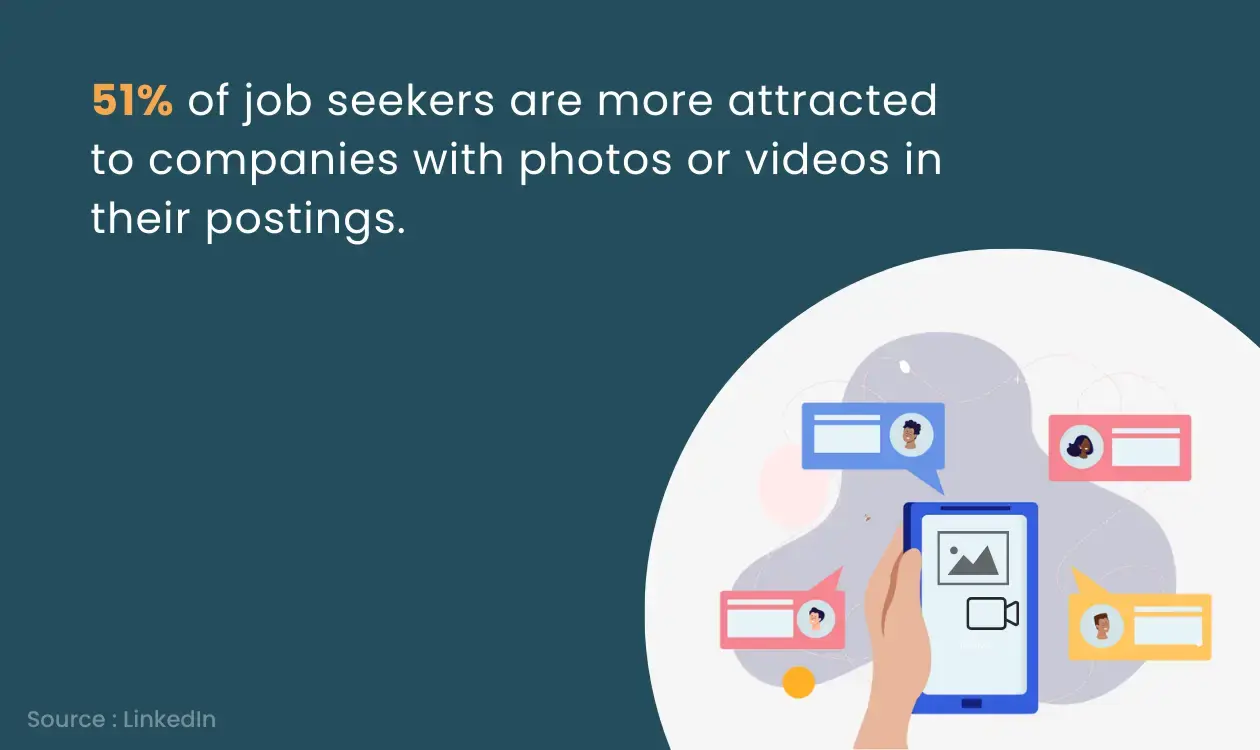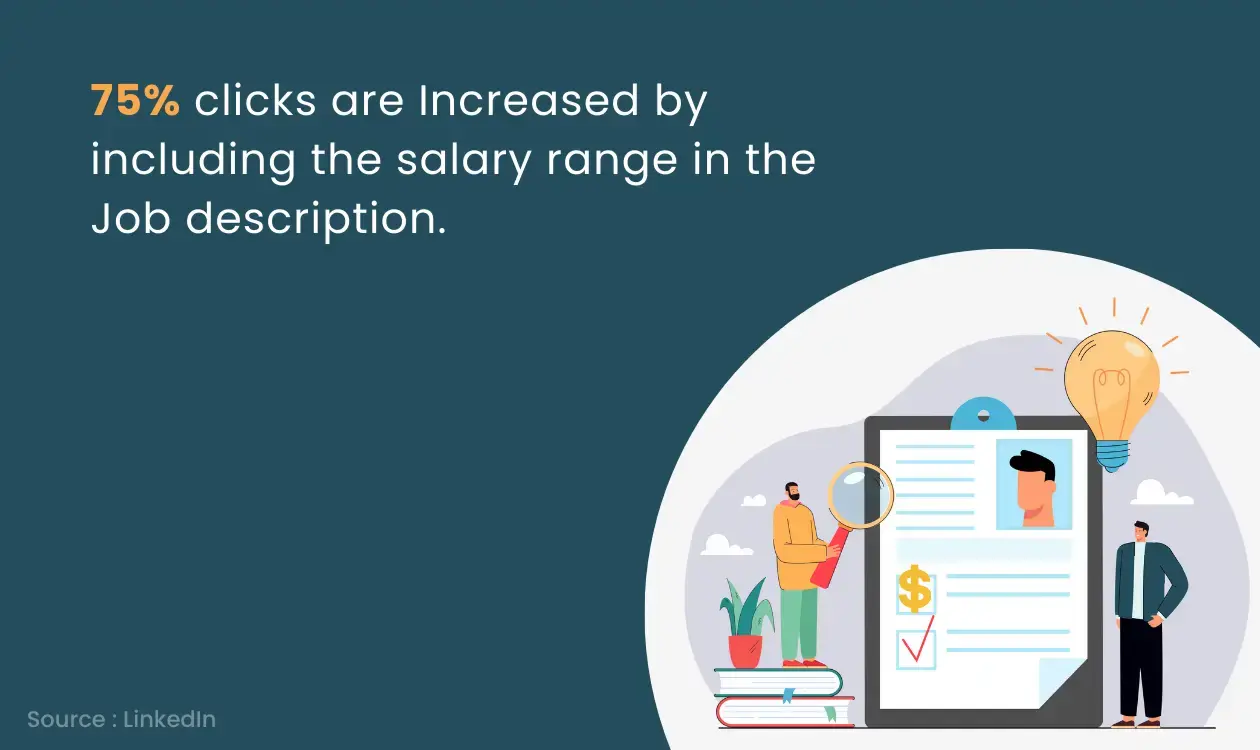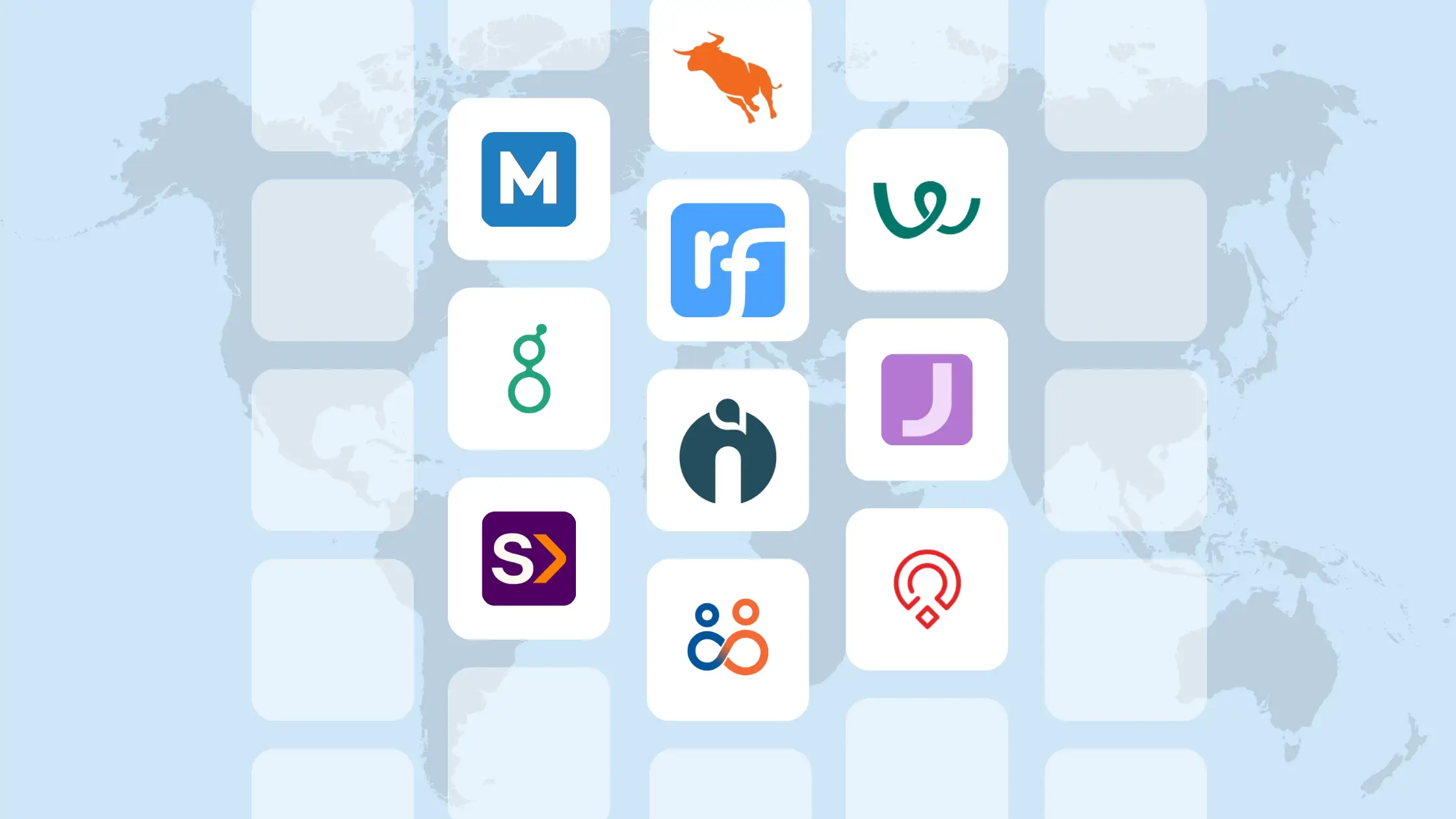Without a doubt, the recruitment process is a crucial part of an organisation. But why?
The reason is way too simple.
Do you want to create a strong, sustainable, and profitable recruitment business? Then you need smart people who can make this dream come true.
But, right now, the job market is way too competitive. That’s not the only problem.
There is also a shortage of skilled talent in the market. As a result, it is even harder to find and hire talented individuals for open positions.
So, you need to make sure your recruitment workflow is streamlined. Plus, you must give positive candidate experience to hire the best ones.
How can you do it? – You must be wondering out of frustration, right?
Well, be completely worry-free! This recruitment process guide is your one-stop solution to all your hiring obstacles.
So, what are you waiting for? Let’s dive deep into this ocean of organised information just created for YOU.
First things first, What does the recruitment process mean?
What is Recruitment Process?
The recruitment process is a series of activities that organisations conduct to find and hire talent to fill the open positions.
Recruiters identify, attract, screen, shortlist, interview, select and onboard the right talent. These functions involve the recruitment process workflow.
It is a core function of the human resource department. However, recruitment is a collaborative approach.
Recruitment process includes other stakeholders. The recruiter, resourcer, hiring manager, and CEO collaborate to ensure a smooth process.
Conducting a simplified and efficient recruiting process is SO IMPORTANT for every business. Why?
Let’s see why the recruitment process is so important for the organisations.
Top Benefits of the Recruitment Process You Can Leverage
Why is a well-planned recruitment process very important for businesses?
The answer is easy. A well-driven recruitment process will offer many benefits for your business.
Let’s explore some of the top benefits of a structured recruiting process brings.
1. Secure Quality Hires Faster
The rule is simple.
You will find the best people by attracting a wider pool of talented candidates. Of course, your recruiters need to assess their skills in a proper way. This will lead to higher productivity, better work quality, and increased innovation.
2. Reduced Recruitment Costs
Hiring the wrong candidate can be very expensive. It results in high turnover costs, productivity loss, and more training expenses.
We all know this, right?
A structured recruitment process minimises bad hires and reduces costs significantly.
3. Enhance Your Employer Brand Value
A foolproof recruitment process enables your recruiters to effectively engage with candidates. You can even provide a positive candidate experience.
Your healthy company culture attracts future talent. Also, it improves your overall employer brand reputation. As a result, more candidates will give word-of-mouth recommendations and positive online reviews. This will attract even more high-quality talent in the future.
4. Improved Employee Retention Rate
Your employees are more likely to be engaged and satisfied if they feel they are fairly selected. It will result in higher employee retention rates and lower recruiting costs in the long run.
5. Achieve Long-Term Business Growth
A streamlined recruitment process comes with a solid recruitment plan. It enables your organisation to always hire top talent in the competitive job market. This way, your organisation can build a skilled and motivated workforce. The new hires will also increase your company's creativity, productivity, and competitiveness.
Over time, this investment in human capital results in sustainable business growth. Win-win for both companies and individuals, right?
7 Best Recruitment Process Steps in 2025
Nowadays, seeking the right talent is like finding a needle in a haystack. It takes a lot of time, effort, and a keen eye to identify the perfect fit.
Attracting and selecting top candidates is very difficult in today's competitive job market.
For that, you NEED what? A well-structured and efficient recruitment process.
Here’s a 7-step guide that will give you the knowledge and tools to navigate your recruitment journey.
Whether you're a seasoned recruiter or just starting out, this roadmap is for all. It will help you find the ideal candidate to contribute to your team's success.
So, get ready!
Let's dive into the 7 steps in the recruitment process. Turn your applicants into great new hires.
1. Identify Your Recruitment Needs
A successful recruitment journey begins with a clear destination.
So first, Identify your recruitment needs.
This step goes beyond simply filling a candidate position. It's about having the skills, experience, and cultural fit to drive your team forward.
To identify the needs, start asking yourself these 4 important questions:
- WHO - are the individuals essential for advancing your team?
- WHAT - skills and experience are Required?
- HOW MANY - new candidates are required to achieve your organisational goals?
- WHICH - candidates best align with your team's culture for success?
Assess your team's current skills and performance regularly. This way, you can predict future needs and avoid reactive hiring.
Before opening a new position, consider your existing workforce. Are some employees overloaded, impacting their well-being and productivity? Could someone take on additional responsibilities, or is a new hire necessary?
Proactive planning is key.
Identify potential gaps and foresee future needs before they disrupt your workflow.
Decide to open a new position? Then, carefully review your current job descriptions and requirements. Compare them to the required skills, qualifications, and experience for the new role.
If internal talent can't fill the position via training or upskilling, it's time to move on to the next step.
This successful recruitment process depends on effective management. Even a single misstep can harm your company's brand and overall well-being.
Lay the foundation for a smooth recruitment process by specifying your needs. Remember, the right hire isn't just a filled position. It's a strategic investment in your future.
2. Write a Compelling Job Description
Now you have your answer on how to identify your recruitment needs, right? Then what next?
It’s time to Flaunt your artistic skills. Craft a compelling job description that attracts qualified candidates.
This description must clearly outline day-to-day responsibilities and key abilities. and traits that you seek in your ideal candidate.
Your job description is the first impression you make on potential talent. So, spark their curiosity with a bold statement that reflects your company's vision.
Use language that resonates with potential candidates. Clearly highlight what the organisation expects. Also, add what it offers for career growth, a positive work environment and unique perks.
Simplify the process for candidates. Provide a checklist of characteristics that enable them to assess their fit for the role.
Here is the list of checklists to make your description more attractive.
Job Description Checklist to Attract the Ideal Candidates
- Compelling Job Title: Don’t be generic; be specific and intriguing.
- Authentic & Purpose-Driven Intro: Start with an engaging and informative introduction
- Engaging/ captivating Summary: Briefly showcase the role's purpose, highlighting impact and growth potential.
- Growth Opportunities: Emphasise professional development, learning opportunities, and career progression.
- Essential Skills and Experience: List must-have skills and relevant experience. Avoid excessive requirements.
- Education and Qualifications: Clearly outline the essential qualifications, including education and experience.
- Company Culture: Showcase your unique culture and values.
- Remote Work Options: Mention you offer remote opportunities or a flexible work schedule.
- Compensation and Benefits: Outline the salary range, bonuses, benefits and perks.
- Impact of the Role: Describe how the candidate's contributions will make a meaningful impact on the company's goals.
A captivating job description isn't just a formality; it's a strategic tool and part of the recruitment process. It attracts the right candidates and saves you time.
So, write with passion and watch the right talent come knocking.
3. Candidate Sourcing
After flaunting your artistic skill, focus on finding your perfect candidate. In today’s market, it’s critical.
Imagine building your dream house. You wouldn't just use any brick, right? Recruiting is the same. Finding the right talent, the perfect "bricks" for your team, is vital.
So, how will you Find your SO-CALLED “Ideal candidate?”
Yes, you guessed right by doing candidate sourcing. There are two types of sources: external and internal.
1. Internal Sourcing
This refers to the practice of filling job vacancies within an organisation. It means considering your existing employees for promotion, transfer, or referral.
Foster employee development, morale and retention by offering growth opportunities to current employees.
- Employee Referrals:
- Skilled people, skilled people. Your current employees know who would be a good fit for open positions in the organisation. So, leverage your internal network by creating fruitful employee referral programs.
- Promotions and Transfers:
- The current employees are promoted to fill open jobs in the company.
- Establishing a robust talent pipeline:
- Build a diverse talent pipeline via targeted outreach and relationship-building. You can leverage CRM software for efficient management. Keep the pipeline active. Regularly assess and adapt to company needs, ensuring a thriving future workforce.
2. External Sourcing
External sourcing involves seeking candidates from outside the organisation to fill job vacancies. Utilise job board postings, social recruiting, agencies, networking events, and campus recruitment.
External sourcing widens the talent pool of the organisation. It brings the organisation fresh perspectives, diverse skill sets, and specialised expertise.
- Job Boards and Platforms:
- Reach a vast pool of active job seekers across various industries and skill sets. Post job openings on online job boards and specialised industry-specific job boards.
- Social Media:
- Advertise job openings and target specific candidate profiles. Engage directly on platforms they frequent.
- Professional Networking:
- Attend industry events and HR and recruitment conferences to connect with potential talent.
- Recruitment Agencies and Headhunters:
- For niche roles, get help from recruitment agencies and headhunters. This way, you get specialised targeted talent pools and expertise.
- Career Websites:
- Create dedicated career sections on your websites. Post job openings and provide information about your company's culture, values, and benefits.
So, to build a strong recruitment process involves strategic sourcing of internal and external candidates.
4. Candidate Screening
Once you've Sourced candidates, here starts the real treasure hunt: candidate screening.
Candidate screening is your chance to Sift through the sand to find gold. It's the crucial step where you move from attraction to perfect match.
Hiring the right person comes down to Three key phases:
1. Phone screening and Initial interview:
Phone screening helps you check the basic qualifications and interests of your candidate. The video interviews allow you to review the background and skills more deeply. So, phone screenings and video interviews are vital to assess communication and enthusiasm.
2. Automate initial Tasks:
Use Applicant Tracking Systems(ATS) to eliminate resumes that don't match your requirements. Online quizzes and tests can help you quickly assess basic skills and aptitudes. Remember, though, technology isn't everything.
3. Candidate Fit Assessment:
For the best candidates, go beyond just reading their resume. Ask yourself: is their career path consistent? Do their past experiences fit your needs? Can you imagine them getting along with your team?
Many companies also perform background and social media checks at this stage. But why? To ensure that a candidate doesn't have criminal records or a misconduct history.
Remember, this is a two-way street. Give candidates a chance to ask questions and assess your company culture.
A positive screening experience is a must in the recruitment process. It leaves a lasting impression even if they aren't the perfect fit.
By carefully and thoughtfully screening, you can find diamonds in the rough.
5. Strategic Interviewing to Secure Top Talent
You identify the target crowd after the macro filtering via the screening process.
Now you have your targeted crowd, and From there, you have to find your only “ONE.”
The interview stage is the critical crossroads in the recruitment process. It allows employers to assess candidates' suitability for a role beyond their resume.
Here, the shortlisted candidates get their chance to shine. It allows you to check a candidate's skills, experience, personality, and cultural fit.
Well, you will schedule meetings and interviews with the shortlisted candidates. Here are the types of interviews in recruitment process to assess their skills and qualifications.
1. In-person interview:
- This is a more in-depth interview with the hiring manager and/or other team members. It may involve behavioural questions, situational questions, and technical questions.
2. Panel interview:
- It involves a group of interviewers from different departments of the organisation.
3. Second or third interview:
- This is necessary for shortlisting top candidates or for roles requiring higher-level approval.
In this type of interview, you get a comprehensive assessment of candidates. Conduct various tests to assess various aspects of their skills, knowledge, and abilities.
Here are three main types of tests that can provide a well-rounded evaluation:
1. Technical/Job-Specific Skills Test:
- Assess the candidate's mastery of the specific technical skills required for the job.
2. Personality and Behavioral Assessment:
- Assess a candidate's potential through personality assessments and behavioural interviews. Assess their behaviour in work scenarios. Also, review their core personality traits like teamwork, adaptability, resilience and communication.
3. Problem-Solving and Critical Thinking Test:
- Evaluate the candidate's ability to analyse situations, think critically, and solve problems.
An interview is a two-way conversation where both sides play an active role.
The interviewer estimates skills, experience, and cultural alignment. On the other hand, the candidate assesses your company culture and growth potential.
6. Offer Letter Workflow
The interview stage is over, but the journey to finding the perfect fit isn't.
Crafting the right offer is critical. A single wrong offer can send a top candidate packing and straight to a competitor's door.
Before making the final proposition, check all the job-relevant references. Ensure that your future employee is someone you can trust.
Take feedback from interviewers, hiring managers, and other relevant stakeholders. This way, you can be certain about the comprehensive evaluation of each candidate. Such thoroughness is essential in the recruitment process.
Offer the salary and benefits that align with the industry standards and your budget.
Ensure the offer is competitive enough to attract and retain top talent. Be ready for unexpected scenarios and prepare for a negotiation. Be flexible during negotiation.
When sending a job offer, ensure that it includes all the necessary details. Mention the start day, job conditions, work hours, and salary.
Avoid leaving anything sketchy. It might discourage a candidate from signing the contract.
Also, if a candidate accepts the offer, let other shortlisted candidates know. It fosters good connections and reputation.
Sometimes, a candidate may decline the offer. So, Handle the situation gracefully and maintain a positive relationship. Consider asking for feedback to improve the recruitment process for future candidates.
Remember, it's not a monologue. Be transparent about company culture, expectations, and challenges.
By Making the right Offer, you will attract your Perfect Candidate.
7. Smooth Employee Onboarding
Now, FINALLY, you have that one “IDEAL” candidate in your hand.
This is the final stage of recruitment process. When the new hire signs the contract and becomes a new member of your team.
Here are some key stages of employee onboarding:
- Pre-boarding: Sending welcome information, collecting paperwork, and setting up equipment.
- First day/week: Introductions, orientation, training, and team integration.
- First month/quarter: Continued training, goal setting, performance feedback, and mentorship.
So, ensure that you provide the new employee with all the necessary details. Give them a warm welcome to the team and support throughout the process.
So, don't underestimate the power of onboarding. It's an investment that pays off in the long run, creating a loyal and engaged workforce. This drives your company forward.
Here, we are wrapping up our high-performing recruitment process. By following this process, you will get your perfect candidate.
Inclusive Recruitment Strategies to Attract Gen Z in 2025
Want to attract and hire Gen Z in 2025?
If yes, start modernising your recruitment process. Give digital-first experiences, transparency, and value alignment.
Leverage social media recruitment platforms like Instagram and Twitch for genuine employer branding. Drop lengthy applications for video introductions. Showcase your commitment to social impact and diversity via clear messaging and action.
Prioritise mental health support and flexible work options. Give continuous learning opportunities for their well-being, freedom, and growth.
Show them how your company makes a difference and invests in their development. This way, you'll unlock their enthusiasm and talent.
Best Recruitment Practices for Recruiters in 2025
Recruitment is an ever-growing and ever-changing landscape.
So, it is true that implementing well-designed hiring practices is important for success.
Here are some of the best practical tips. Execute them to find, attract and hire the right people for your organisation.
- Embrace AI and Automation in your hiring workflow to stay competitive.
- Personalise candidate communication for better engagement.
- Use data analytics to track hiring effectiveness and make data-driven decisions.
- Prioritise and promote diversity, equity and inclusion to create an inclusive workforce.
- Adapt to the growing trend of remote and hybrid hiring.
- Stay updated on the latest hiring trends and technology to transform the way you recruit.
- Foster relationships with passive candidates.
Types of Recruiting Process
Recruiters execute diverse methods of recruitment to find and hire talent.
From traditional paths to innovative approaches, here are the types of recruiting methods . You can apply according to your needs.
1. Internal Recruiting
It is also known as internal hiring. This process involves filling open job vacancies with your existing employees and network.
Recruiters can accomplish it via promotions or lateral transfers within the organisation.
2. External Recruiting
External recruitment is a process of seeking candidates from outside the company.
3. Online Recruiting
This process is also known as digital recruitment or remote hiring. It is about leveraging different online platforms to attract and engage potential candidates. To fulfil hiring purposes. Recruiters utilise company websites, social media, and job boards.
4. Campus Recruiting
This type is also known as college recruitment. In this, recruiters target university students for internships, co-op programs, and entry-level positions.
5. Passive Recruiting
When recruiters are looking for executives or experienced candidates, they utilise this method.
In passive recruitment, recruiters target talent who are not looking for a job change. But they may be open to new opportunities. This recruitment process requires strategic engagement and relationship-building.
6. Social Media Recruiting
Social media has become a new norm. Nowadays, it is necessary for every industry worldwide, and recruitment is no exception.
Leveraging social media for recruitment is crucial. Online platforms like LinkedIn, Twitter, and Facebook to connect with potential candidates.
7. Recruitment Process Outsourcing (RPO):
Outsourcing all or part of the recruitment process to RPO companies is known as RPO process. These agencies possess expertise in talent acquisition. The process conducted by RPO recruiters.
8. Technical Hiring
Tech Recruitment is a process of finding, attracting, assessing and hiring technical talent.
9. Inbound Recruitment
Inbound recruiting is a long-term strategy. For that, you need to create a strong and positive employer brand image. M
The aim is to make the organisation super attractive for future potential candidates
So, talent will come when a position is open in your organisation rather than when you are seeking them.
10. Mass Recruitment
The mass hiring process is also known as high-volume recruiting or bulk hiring.
It is a systematic approach to finding and hiring candidates in bulk in a short timeframe.
It typically involves streamlined processes and workflows.
Mass recruiters do bulk job advertising and standardised candidate assessments. This way, they manage the high volume of applicants.
The process focuses on scalability and speed. Of course, quality hires should be ensured to meet immediate staffing needs.
10 Future Trends in the Recruitment Process
Do you accurately want to predict future recruiting trends? Then, develop an understanding of emerging technologies and evolving candidate preferences.
Do your research on the transformations in the labour market.
Here are some potential future trends you will see in the hiring domain.
1. Emotional Intelligence Talent Assessment
Hiring professionals need to start implementing emotional intelligence assessments into recruitment processes.
They need to evaluate candidates' interpersonal skills, empathy, and adaptability.
2. Predictive Analytics
You will have to adopt predictive recruitment analytics to forecast future talent needs.
Don't forget to recognise high-performing candidates and improve your decision-making in recruitment.
3. Virtual and Augmented Reality (VR/AR)
Start learning more about VR and AR technology because you will need it badly.
In the future, recruitment professionals will use VR/AR technology. Virtual interviews, virtual job fairs, and immersive assessments will be a new norm.
This offers engaging and realistic experiences for candidates.
4. Remote Recruitment Will Become a New Norm
We are all witnessing the increase in remote work, and it will only expand.
So, HRs and recruiters need to adapt more to online Recruitment processes.
This includes virtual interviews, online assessments, and remote onboarding. Companies need to accommodate the growing trend of remote work.
5. Personalisation in Candidate Communication
Positive candidate experience gives you a chance to reap so many fruitful benefits.
So, start offering customised recruitment experiences.
It must be tailored to individual candidates' preferences and career goals.
6. Skills-based Hiring will be More Preferable
Gone are those days when candidates were selected based on qualifications they had.
Times have changed. You will see a shift towards skills-based hiring. It will focus on candidates' competencies, capabilities, and potential for growth.
Traditional qualifications like degrees or certifications will be outdated in the recruitment process.
7. Diversity, Equity, and Inclusion (DEI)
Emphasise diversity, equity, and inclusion in your recruitment to stay competitive. Implement DEI strategies to attract and retain diverse talent.
8. Gig Economy Integration
We are seeing the rise of the Gig economy at its peak, right?
So, organisations will have to adopt flexible workforce models. They need to start integrating gig economy workers, freelancers, and independent contractors
into recruitment strategies.
9. Blockchain in Recruitment
Data security and privacy will be a major concern in the future. So, the adoption of blockchain tech is a must for these tasks.
-
Verify candidate credentials
-
Maintain a transparent record of candidate info
10. Gamification in Candidate Assessment
Recruiters may need to use gamification elements in recruitment processes.
Recruitment professionals can use gamified assessments and challenges to improve candidate engagement.
Best Tech & Tools For Recruitment Process Automation
The recruitment process continues to evolve with advancements in technology.
Here are some of the best tech tools to streamline the recruitment process:
Applicant Tracking Systems (ATS)
ATS platforms like iSmartRecruit streamline your entire recruitment process. It helps you with job posting to managing applications and tracking candidate progress.
94% of recruiters say their ATS software has positively impacted their hiring process. It was found by the Capterra survey.
AI-Powered Recruitment Tools
AI in recruitment has started to become a crucial facet of the recruitment process.
AI helps recruiters to automate candidate screening and schedule interviews. Recruiters can engage with candidates via recruitment chatbots. It eventually saves time and reduces bias.
Video Interviewing Platforms
Online video interview platforms such as ScreeningHive and Zoom facilitate remote interviews. This way, hiring managers can conduct virtual interviews efficiently. This flexibility enhances the overall recruitment process for both candidates and employers.
Candidate Assessment Platforms
Tools like Codility or HackerRank enable recruiters to assess candidates' technical skills. These tools evaluate talent via coding challenges and assessments.
These online assessment tools streamline the evaluation process for technical roles. Tools like ACCENDO can help with assessing psychometric, business simulation and cognitive abilities.
Employee Referral System
Employee referral platforms help organisations leverage their internal networks to source top talent. The system streamlines and manages the employee referral program and enhances employee engagement.
Social Media Recruiting Tools
Tools such as LinkedIn Recruiter streamline social media recruiting efforts. You can automate job postings, candidate sourcing, and engagement on such social platforms. This integration can significantly boost the recruitment process.
Text Recruiting Platforms
Text recruiting platforms allow recruiters to communicate with candidates via text messages. It improves response rates and speeds up the hiring process.
Candidate Relationship Management (CRM) Systems
Recruitment CRM systems help recruiters manage and nurture good relationships with candidates. This improves candidate engagement and retention rate.
Onboarding Software
Onboarding platforms streamline the new hire onboarding process.
It automates tasks such as manual paperwork, training, and introductions. It will lead to a smoother transition for new employees.
Team Collaboration Tools
The team collaboration tools like Slack, Microsoft Teams, or Google Workspace foster communication.
This collaboration improves productivity and coordination.
Diversity and Inclusion Tools
Diversity and inclusion tools help organisations remove bias from job descriptions.
For example, Textio or Plum assesses candidates' potential for success. This way, it creates more inclusive hiring.
Mobile Recruiting Apps
Mobile recruiting software and apps allow recruiters to manage recruitment using their mobiles.
Such tools allow them to post jobs, review applications, and communicate with candidates.
By leveraging such tools and platforms, recruiters can streamline their processes.
It improves efficiency and candidate experience. This helps companies attract and hire top talent in a competitive market.
Easily Manage Your Entire Hiring with iSmartRecruit!
iSmartRecruit has been working passionately for 10 years to provide easy-to-use software solutions.
The software aims to mitigate every hiring obstacle recruitment professionals face.
We understand the importance of streamlining your recruitment process.
It is crucial for your higher efficiency and success.
With iSmartRecruit, you can revolutionise your hiring strategy effortlessly. So, say GOODBYE to that tedious paperwork and manual candidate tracking.
Our AI Recruitment Software automates manual hiring tasks. It allows you to focus on tasks that require critical thinking and a human approach.
This way, it saves your precious time and resources.
iSmartRecruit offers a user-friendly and intuitive interface. So you can smoothly manage all of your recruitment processes on a single platform.
Everything is seamlessly integrated. Job posting on multiple online platforms to conduct interviews and make offers.
Therefore, no more juggling between multiple tools or systems. iSmartRecruit streamlines the end-to-end process for you.
Ready to see it in action? Request a FREE demo now and take the first step towards your recruitment success. Streamline your recruitment today with iSmartRecruit and unlock unparalleled efficiency and effectiveness.
Recruitment Process FAQs
1. What is the purpose of the Recruitment Process?
The recruitment process aims to find the best person for the job, not just fill the vacancy. It's about attracting, screening, and selecting the top talent. That drives success for your company.
2. What does HR do before a job offer?
HR works to confirm the candidate's qualifications via background checks and salary verification. They also help finalise the compensation package. Basically, they double-check everything to ensure you're hiring the right person!
3. How does technology affect recruitment policies?
Technology is shaking up recruitment policies! From AI-powered screening to video interviews, it widens the talent pool. But beware! Bias can creep in through algorithms, and human connection should not be lost. So, use tech wisely as a powerful tool to find great people, not a replacement for good judgment.









.webp.dat)
.webp.dat)








